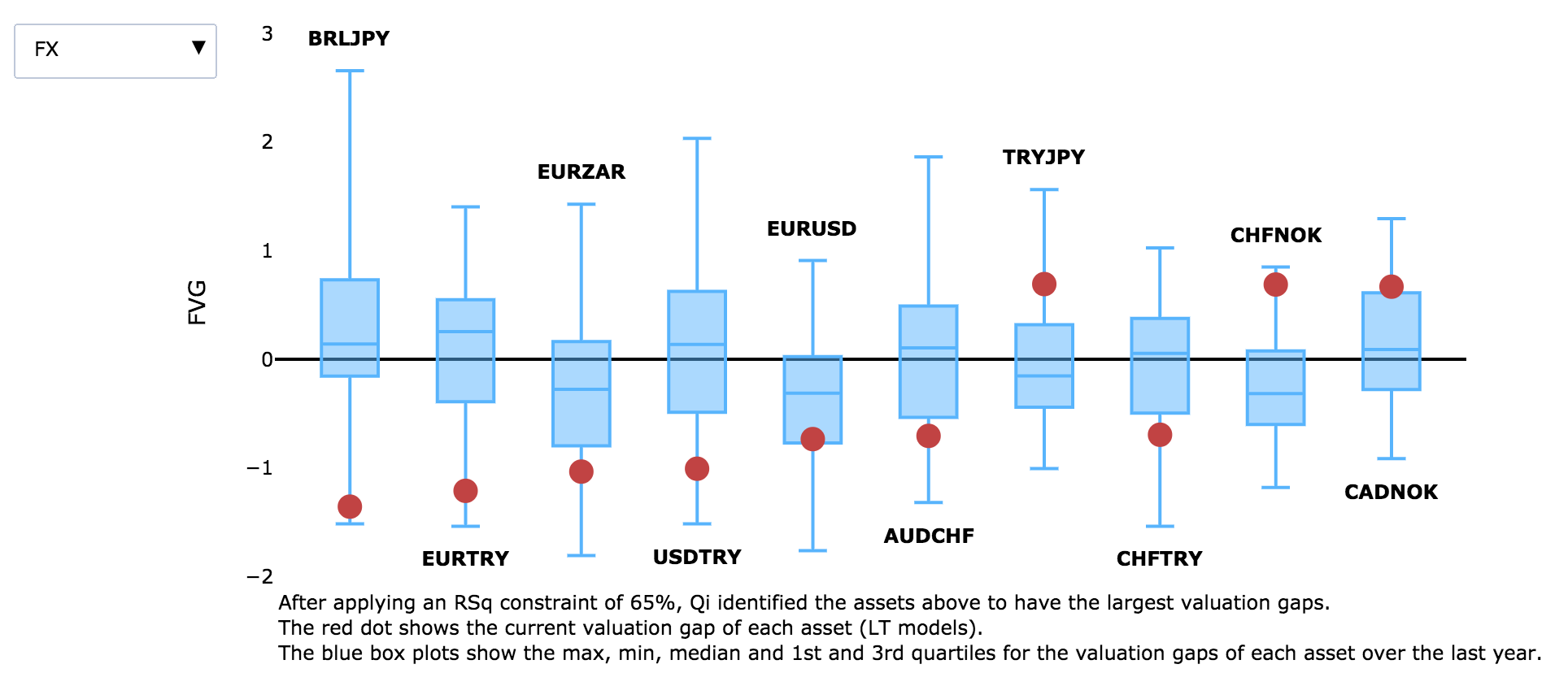
15.11.2022
US equities - a shift in factor leadership?
While the market’s attention has been focused on the inverse relationship between equities and bond yields, we should start paying much more attention to credit spreads from here – currently the largest driver of Qi’s S&P500 model value.
The price return of a stock over any period can be decomposed into:
The price return of a stock over any period can be decomposed into:
- the change in the earnings multiple the market is prepared to pay for that stock
- the change in the earnings forecast of that stock
History shows the former is the most significant driver of returns. This year is no exception – the S&P500 has fallen 17.5% YTD: The PE ratio has contracted 21% while 12mth fwd earnings have risen 3.5%. The tables likely will turn next year.
Now in simple terms, think of the PE ratio currently as a confidence barometer on growth vs. inflation. The sweet spot of course for stocks is when consensus GDP growth expectations are rising faster than inflation – earnings prospects are improving relative to the cost of capital.
This year has seen the reverse - a deteriorating growth / inflation trade-off. Indeed, in Qi’s language, the largest driver for the decline in the S&P500 this year has been rising real yields (click on the chart below to expand - it shows YTD attribution for S&P500 model value).
Now in simple terms, think of the PE ratio currently as a confidence barometer on growth vs. inflation. The sweet spot of course for stocks is when consensus GDP growth expectations are rising faster than inflation – earnings prospects are improving relative to the cost of capital.
This year has seen the reverse - a deteriorating growth / inflation trade-off. Indeed, in Qi’s language, the largest driver for the decline in the S&P500 this year has been rising real yields (click on the chart below to expand - it shows YTD attribution for S&P500 model value).

Now the big concern in 2022 has been on rising inflation; the big concern in 2023 will be the lagged impact of tighter monetary policy on growth.
Are the tables turned next year where earnings forecasts are cut aggressively with growth expectations are falling even though inflation is falling also? The risk is then that PE multiple expansion will be put on hold until investors have more clarity on the outlook.
On cue, a bigger driver than real yields has come to the fore in Qi’s S&P 500 model value – credit spreads.
Credit spreads have a history of leading equities at turning points, especially when we nearing the start or end of a business cycle.
Note HY credit spreads saw their YTD wides on 27th September; the S&P500 saw its low 2wks later on 12th October – this was part of the reason why Qi’s model value for the S&P500 began rising faster than the index price itself in early October (the chart shows attribution of Qi model value since that Oct 12th low).
Are the tables turned next year where earnings forecasts are cut aggressively with growth expectations are falling even though inflation is falling also? The risk is then that PE multiple expansion will be put on hold until investors have more clarity on the outlook.
On cue, a bigger driver than real yields has come to the fore in Qi’s S&P 500 model value – credit spreads.
Credit spreads have a history of leading equities at turning points, especially when we nearing the start or end of a business cycle.
Note HY credit spreads saw their YTD wides on 27th September; the S&P500 saw its low 2wks later on 12th October – this was part of the reason why Qi’s model value for the S&P500 began rising faster than the index price itself in early October (the chart shows attribution of Qi model value since that Oct 12th low).

So maybe 2023 is a year where good economic news is good news for the market and vice versa.
In 2022 bad economic news has been welcomed by the market allowing the Fed to take the foot off the tightening pedal. This regime change is not going to happen overnight – the battle with inflation is not over.
However, Qi will likely show any such change by the negative market sensitivity to real yields falling relative to the market’s sensitivity to credit spreads.
In 2022 bad economic news has been welcomed by the market allowing the Fed to take the foot off the tightening pedal. This regime change is not going to happen overnight – the battle with inflation is not over.
However, Qi will likely show any such change by the negative market sensitivity to real yields falling relative to the market’s sensitivity to credit spreads.




